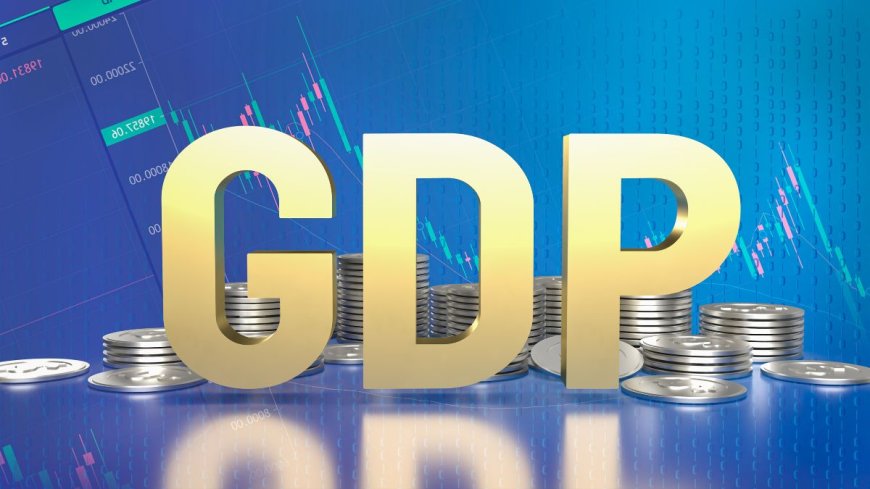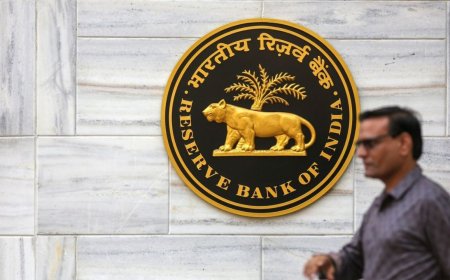India's GDP Growth Projected at 6.5–6.7% in FY26, Powered by Domestic Demand and Tax Reforms
India's economy is forecasted to grow between 6.5% and 6.7% in FY26, backed by resilient domestic demand, government-led tax reliefs, and supportive fiscal policies, according to top analysts and official projections.

India’s GDP Forecasted to Grow 6.5–6.7% in FY26 Amid Robust Demand and Tax Relief Push
By ASJ News Desk
Date: May 2, 2025
India's economic engine is expected to roar steadily in FY26, with the gross domestic product (GDP) projected to grow between 6.5% and 6.7%, according to fresh estimates from policy think tanks, brokerage houses, and government agencies. The forecast reflects strong domestic consumption, strategic tax reliefs, and sustained infrastructure investments, which continue to propel the nation as a standout performer among major economies.
Despite persistent global uncertainties—ranging from inflationary headwinds in the West to geopolitical tensions in Asia—India remains resilient, buoyed by structural economic reforms and rising investor confidence.
Economic Foundations: Strength in Domestic Demand
Domestic demand has emerged as the bedrock of India’s growth story. Private consumption, which accounts for nearly 60% of GDP, has shown remarkable traction across urban and semi-urban belts.
Sectors such as retail, automobiles, consumer durables, and hospitality are experiencing robust demand, largely due to rising incomes, digital penetration, and credit availability. Rural consumption is also rebounding on the back of higher minimum support prices (MSPs), improved agri-output, and targeted welfare schemes.
According to a joint report by The Economic Times and Mint, real GDP is likely to hit 6.6% in FY26, factoring in cyclical recovery and policy tailwinds.
The Tax Relief Catalyst: More Money in Pockets
The Union Government’s announcement of targeted tax relief measures in the FY25 Budget has had a cascading positive effect on sentiment and spending. The restructuring of personal income tax slabs, coupled with reduction in compliance burdens for MSMEs, has unlocked liquidity into the system.
“Tax reliefs are translating into real disposable income gains. Middle-class consumption is reviving while businesses, especially small ones, are seeing margin expansions due to rationalized tax rates,” says Aarti Mishra, Chief Economist at ValueAxis Capital.
Moreover, GST collections are touching record highs, a sign of robust formal sector activity. The central government collected ₹1.85 lakh crore in April 2025, marking a 12% year-on-year rise.
Public Investment and Infrastructure Drive Growth
Public capital expenditure has played a central role in sustaining post-pandemic recovery. The government continues to prioritize infrastructure, with allocations exceeding ₹11 lakh crore for FY25. Initiatives such as the Gati Shakti Master Plan, National Logistics Policy, and Make in India 2.0 are beginning to show results.
In FY26, infrastructure spending is expected to spill over into private sector investments, crowding in new projects and boosting employment across core industries.
Sectoral Snapshot: Growth Engines of FY26
| Sector | FY26 Growth Outlook |
|---|---|
| Manufacturing | 7.5% |
| Services (incl. IT) | 8.2% |
| Financial Services | 6.9% |
| Construction & Realty | 8.5% |
| Agriculture | 3.5% |
| Trade & Hospitality | 7.8% |
Global Context: A Safe Haven in a Shaky World
While the global economy is forecast to expand at a modest 2.9% in 2025 (as per IMF estimates), India is likely to remain the fastest-growing major economy. China's post-COVID recovery is flattening, and the U.S. remains constrained by sticky inflation and tighter monetary policy.
India, in contrast, is benefiting from a balanced approach—moderate inflation (~5.1%), fiscal discipline, and accommodative monetary settings. A surge in FDI and foreign portfolio investment (FPI) flows in Q1 2025 reflects global capital’s growing preference for India.
Macro Stability Indicators: India on Solid Ground
| Indicator | FY25 Estimate |
|---|---|
| CPI Inflation | 5.1% |
| Forex Reserves | $647 billion |
| Fiscal Deficit (Target) | 5.1% of GDP |
| CAD (Current Account Deficit) | 1.2% of GDP |
| PMI Manufacturing (April) | 58.7 |
| GDP Growth (Projected FY26) | 6.5%–6.7% |
These numbers affirm the macroeconomic stability India is enjoying. RBI’s calibrated interventions, particularly in foreign exchange and bond markets, have further strengthened investor trust.
What Could Tilt the Scale? Key Risks to Monitor
Despite the optimism, economists caution against complacency. Several downside risks could affect growth momentum:
-
Crude oil prices spiking above $90/barrel due to geopolitical instability.
-
El Niño effect impacting monsoons and rural demand.
-
Persistent inflation leading to RBI rate hikes in late FY26.
-
Sluggish global trade recovery impacting exports.
“India’s growth path remains promising, but not without vulnerabilities. We need structural labor and land reforms, higher female participation, and digital inclusion to sustain 7%+ growth beyond FY26,” warns Suresh Tandon, macroeconomist at Moneycontrol Research.
How Corporates Are Reacting: Confidence Rebounds
India Inc. has started the new financial year on a positive note. Corporate earnings in Q4 FY25 surprised on the upside, with Nifty50 EPS growing by 11.2% YoY.
Top executives from sectors like IT, BFSI, FMCG, and capital goods are upbeat. Hiring trends are stabilizing, and capex announcements from private firms touched ₹4.3 lakh crore in FY25—highest since FY12.
Consumer Confidence: Rising Across Tiers
The Reserve Bank of India’s Consumer Confidence Survey showed a 9-point jump in the Current Situation Index (CSI) in April 2025, reflecting growing optimism among households.
Digital lending, BNPL (Buy Now Pay Later), and UPI-based credit instruments have deepened financial access, especially among Tier 2 and Tier 3 cities, supporting aspirational spending in segments like smartphones, EVs, and packaged goods.
Expert Views on the Road Ahead
“We project GDP to grow at 6.6% in FY26, led by resilient consumption and moderate global spillovers. India’s medium-term trajectory is intact,” — Pranav Mehta, Economist at Nomura India.
“There’s scope for upside surprises if inflation remains controlled and monsoon is normal. FY26 might even edge toward 7% if exports bounce back,” — Ritu Bansal, Policy Analyst, Deloitte India.
“Fiscal prudence, tax reforms, and rising infra investment make India a compelling story through 2030,” — Shubham Arora, Fund Manager, Invesco Mutual Fund.
A New Phase of Expansion
India’s projected GDP growth of 6.5–6.7% in FY26 reflects not just a cyclical upswing but a structural resilience built over the past few years. With strong domestic demand, proactive governance, and high-quality investments leading the way, India is poised to enter a new phase of sustainable expansion.
Challenges remain—but so does opportunity. If managed wisely, FY26 could mark the beginning of a golden half-decade for the Indian economy, making it a global growth engine when others are still regaining momentum.
What's Your Reaction?
 Like
0
Like
0
 Dislike
0
Dislike
0
 Love
0
Love
0
 Funny
0
Funny
0
 Angry
0
Angry
0
 Sad
0
Sad
0
 Wow
0
Wow
0












































































